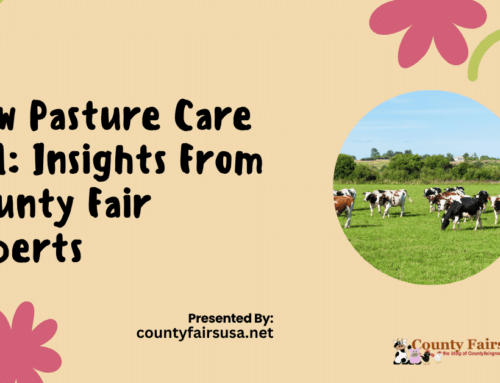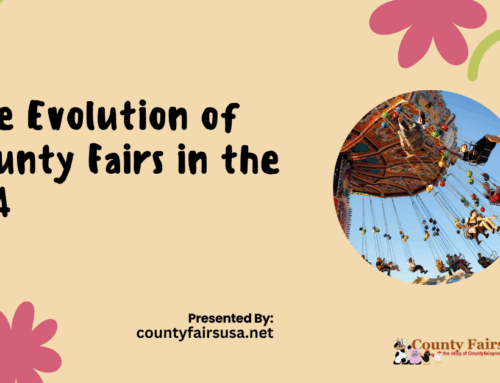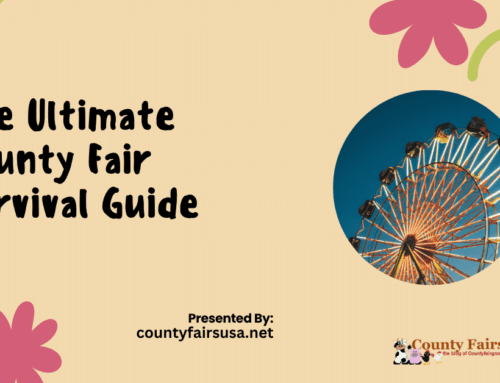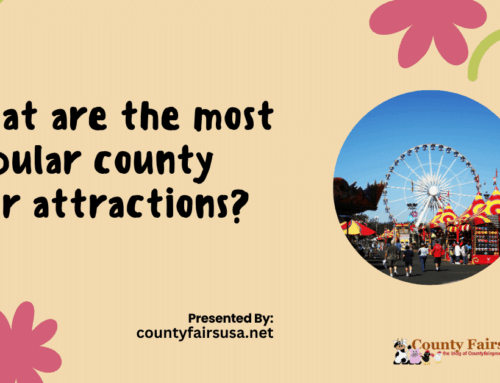There’s nothing quite like the excitement of a local fair—the smell of fried food, the flashing lights of carnival rides, and the thrill of winning a prize at a game booth. These events bring together families, friends, and visitors looking for a fun-filled day. But as much as fairs offer an unforgettable experience, they can also get overwhelmingly crowded, making it difficult to enjoy the attractions without long waits and packed walkways.
What Are the Best Times to Visit the County Fair?
If you’ve ever found yourself stuck in a sea of people, struggling to move from one ride to the next, you know how frustrating it can be. The good news is that with a little planning, you can avoid the busiest hours and make the most of your visit. Whether you prefer a quiet morning stroll through the exhibits or an evening filled with carnival games, this guide will help you choose the best times to go for a more relaxed experience.
County Fair Crowd Patterns
Certain factors play a significant role in how busy a fair gets. Some days and times naturally attract more visitors than others. Before selecting a date, it helps to consider a few key elements that influence crowd sizes.
Weekends tend to be the busiest times, as more people are available to attend. Fridays and Saturdays, in particular, see the highest attendance, while Sundays may slow down slightly toward the evening.
Holidays and special event days can significantly impact fair traffic. Fireworks nights, live concerts, and promotional days often bring in larger crowds. Checking the fair schedule in advance can help you avoid these peak times.
Weather conditions also play a role. Pleasant, sunny days attract more visitors, while extreme heat or light rain can discourage attendance.
School schedules make a noticeable difference as well. If the fair is held during the school year, weekdays are much quieter. However, if it takes place during summer break, crowd levels can remain high throughout the week.
Best Days to Visit the County Fair
Weekdays are generally the best time to visit for a calmer experience. Tuesday through Thursday tends to have the least foot traffic, making it easier to explore attractions without long waits. Many families and working professionals opt for weekend visits, so going during the week provides a more peaceful atmosphere.
The first and last days of the fair can also be strategic times to visit. The opening day may have a steady stream of visitors, but it usually isn’t as packed as the peak weekend days. Closing day attendance varies—some people rush in for a final visit, while others assume it will be too busy and stay away.
Avoiding major event days is another way to sidestep large crowds. Fireworks displays, headline concerts, and discount admission days are big draws that increase foot traffic. Reviewing the fair’s official calendar can help identify which days to avoid.
Best Times of Day for a Relaxed Experience
Arriving early is one of the best ways to enjoy the fair with fewer people. Most visitors take their time getting ready, so the first few hours after the gates open are usually quiet. This is the perfect time to enjoy popular rides, grab a bite to eat, or explore exhibits without large crowds.
Mid-afternoon can be a good window as well. By this time, early visitors may have started leaving, while the evening rush has yet to arrive. This short period between 2 PM and 4 PM can offer a nice balance, especially on weekdays.
Late-night visits can be another option, depending on the day. On less popular nights, the fair starts to empty out after dinner, creating a more relaxed environment. However, on weekends and special event nights, crowds often linger until closing time. If an evening visit is your preference, choosing a midweek night can make a difference.
Best Months and Seasons for Visiting
The timing of your visit within the fair’s run can also impact crowd levels. Many fairs last for multiple weeks, and early or late-season visits tend to be less crowded than mid-season days. The first few days may be quieter as people wait for reviews and feedback, while the final days can go either way, depending on promotions and last-minute visitors.
Weather plays a big role in attendance. If you don’t mind slightly cooler or damp conditions, visiting on a day with an overcast sky or light drizzle can mean fewer people. On the other hand, extremely hot days can also drive some visitors away, though shaded areas and air-conditioned exhibits tend to fill up quickly.
School schedules are another important consideration. If the fair is running while schools are in session, daytime visits will be much quieter. Once schools are out for breaks, expect an increase in families and younger crowds throughout the day.
Pro Tips for Avoiding Crowds
Planning ahead can make a big difference in how enjoyable your visit is. Here are a few additional strategies to help make the most of your trip.
Buying tickets online in advance can save time and help you skip long lines at the entrance. Some fairs also offer early-bird discounts for online purchases.
Using alternative entrances, if available, can be a smart way to avoid congestion. Many fairs have multiple entry points, and the main entrance is usually the busiest.
Planning your route ahead of time allows you to visit the most popular attractions first before they get crowded. Checking the fair map in advance can help you navigate efficiently.
Checking social media for real-time updates on crowd levels can help you decide the best time to go. Some fairs provide live updates on wait times for popular attractions.
Going against the flow can also be beneficial. Most visitors follow a natural path through the fair, moving from one section to another in a predictable order. Choosing a different route can help you avoid the busiest spots.
Final Thoughts
A trip to the fair should be a fun and stress-free experience, and timing your visit wisely can make all the difference. By choosing a weekday over a weekend, arriving early or mid-afternoon, and avoiding major event days, you can enjoy all the fair has to offer without the hassle of large crowds.
Small adjustments in planning, like purchasing tickets in advance, using alternate entrances, and checking for crowd updates, can also improve your experience. Whether you’re there for the rides, food, or entertainment, taking a strategic approach can help you make the most of your visit.
If you have your own tips for avoiding crowds at the fair, feel free to share your thoughts and experiences.









Leave A Comment